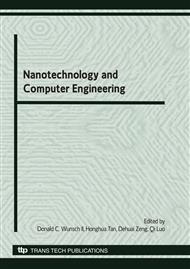p.756
p.760
p.764
p.769
p.775
p.782
p.787
p.792
p.797
Evaluation of Enterprise Technical Innovation Capacity Based on Interval Number and Entropy Method
Abstract:
It has important practical significance to study technical innovation capacity deeply for enterprises which are in the economic globalization. This paper directs at the form of property value are interval numbers and the weight information is completely unknown case, It determines the weights of the attributes by the entropy method based on changing interval numbers decision matrix into single point decision matrix, then measure and evaluate enterprise technical innovation capacity scientifically. Finally, a example indicates that this method is a scientific and practical one for enterprises.
Info:
Periodical:
Pages:
775-781
Citation:
Online since:
June 2010
Authors:
Price:
Сopyright:
© 2010 Trans Tech Publications Ltd. All Rights Reserved
Share:
Citation:


